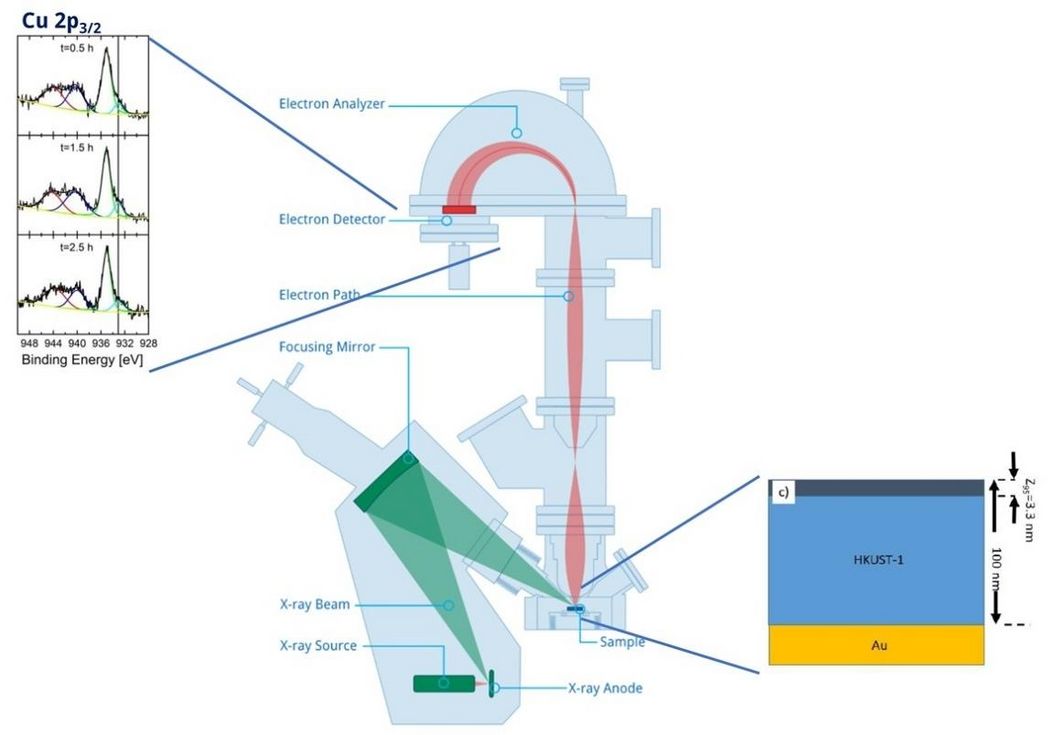Measurements performed on EnviroESCA system reveal selective copper reduction in a Metal-Organic Framework (MOF) under water and pyridine atmosphere, not occuring in methanol atmosphere
In a highlight publication of 2021, researchers from German Bundesanstalt für Materialforschung und –prüfung (BAM) and Karlsruhe Institute of Technology (KIT), in close collaboration with the SPECS field application group, have recently used the SPECS EnviroESCA system to prove that a model system for metal-organic frameworks interacts in a fundamentally different way with an atmosphere of water or pyridine, compared to an atmosphere of methanol.
Metal-organic frameworks, which can be used in a number of applications such as hydrogen storage, carbon capture technology, catalysis or drug delivery systems, are complex molecules in which one or many metal ions are stabilized by organic molecules acting as "linker" elements. The present study has investigated how metal ions, in this case copper, contained in a model system HKUST-1, developed by the Hong Kong University of Science and Technology, can interact with gasses that the framework is exposed to. To this end, the model system was introduced into the unique, fully automated NAP XPS analysis system EnviroESCA and exposed to different gasses at 1-4 mbar pressure, simultaneously to taking XPS measurements of the surface in contact with those gasses.
After optimizing the conditions to fully utilize the intrinsic charge compensation effect of the NAP-XPS technique, allowing the researchers to take measurements unaffected by sample charging without the need for an external electron flood gun, results showed that copper ions contained in the HKUST-1 model framework were being reduced from Cu(II) to Cu(I) in the presence of water and pyridine vapor, but no such reduction effect was found in the presence of methanol vapor.
The presented research illustrates the power of the NAP XPS technique and the great versatility of the EnviroESCA system. BAM and KIT researchers are currently working on a more detailed investigation of the Cu(II) to Cu(I) reduction mechanism, and we are looking forward to learn the results of follow-up study which builds on the data published here.
